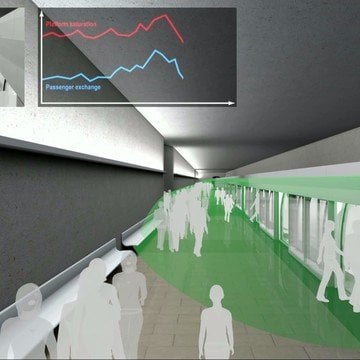railway-international.com
04
'21
Written on Modified on
Traffic / flow optimisation: Improving passenger flows and service
Passenger exchange and platform crowding information is valuable in the design and operation of efficient services. Two solutions, part of the Optimet innovations developed by Metrolab, offer operators actionable insight in these crucial areas.

Acting on dwell time
Within the strict timetabling framework of a metro, the Optimet passenger-based regulation solution enables better and more cost-effective service by using video analysis of platforms to act on two parameters. The first of these is dwell time: extending dwell time can allow more passengers to board during peak times, also reducing the probability of doors being jammed open. And in low-ridership stations, dwell time can be reduced, offering additional operational leeway between stations and allowing the train to coast, thus reducing energy consumption. The second parameter is journey time. If overcrowding is detected at a station, the train can accelerate to reach the station sooner, thereby allowing dwell time to be extended.
Video analysis of passenger exchange and crowding can also help operators to fine tune timetables.
Analysing exchange
Connected with the passenger demand-based solution is the Optimet passenger exchange analyser, offering the operator detailed information on the numbers of passengers boarding, alighting and waiting at a station, by dividing the platform up into an exchange area (next to the platform edge) and a waiting area. With only two cameras required for a 100m platform, this constitutes a cost-effective way of understanding passenger dynamics at all stations, at all times and on all trains. Interfacing this solution with passenger-based regulation results in more responsive real-time train operation, while data can also be logged and analysed to improve timetabling and operational efficiency.
Improving all experiences
With these Optimet solutions, operators today have the ability to anticipate and immediately react to peak demand and exceptional situations, improving throughput, user satisfaction rates and the overall appeal of the metro system in the city.
www.alstom.com

